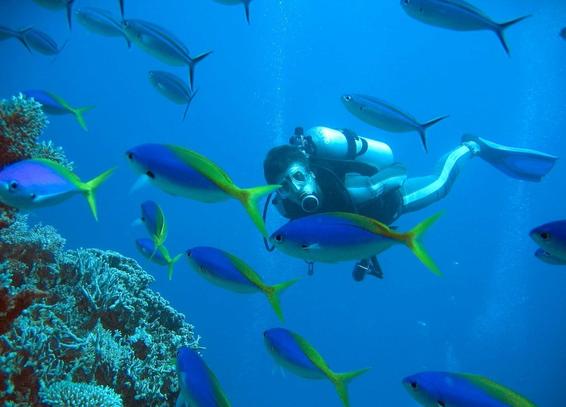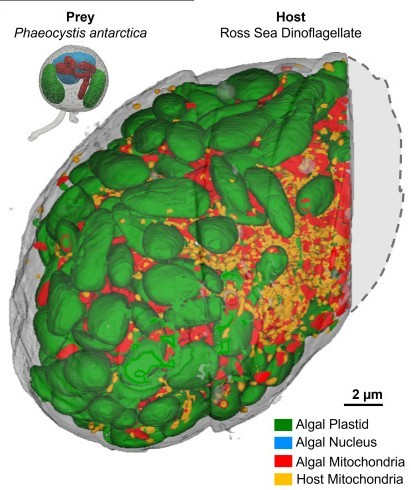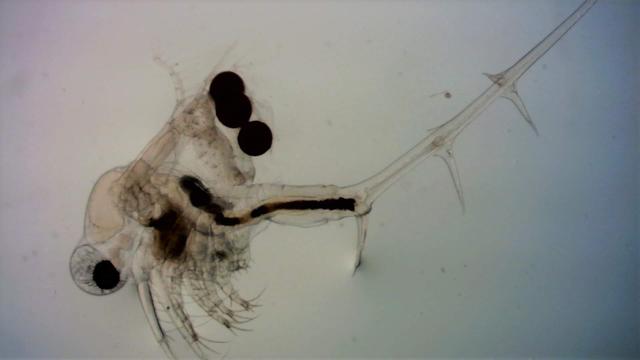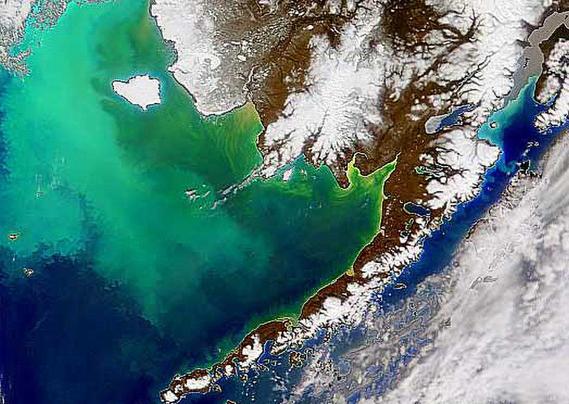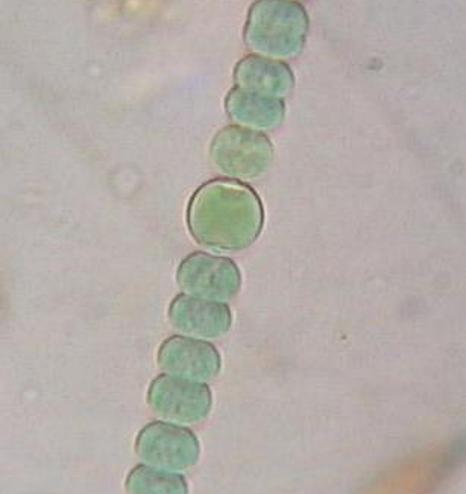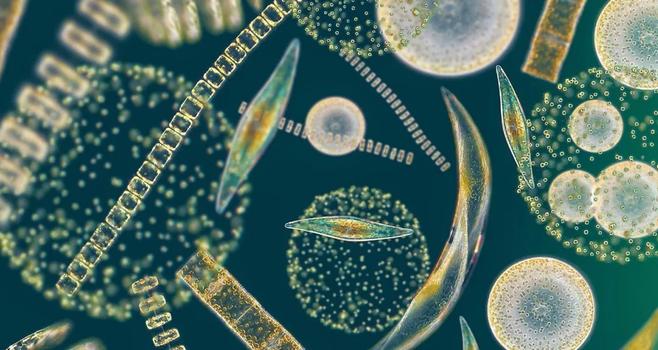Weekend #Plankton #Factoid 🦠🦐
I've always been impressed by this video from New Scientist about #copepods, the planet's most abundant multicellular organism, with interviews from several UK universities, including Exeter and Southampton. Prof Daniel Mayer & others give a lovely explaination on why these #zooplankton, and their poo, are so important to the #ocean ecosystem and #carbon cycling, and why #ClimateChange size shrinkage could have such an impact. #Science 🎥
https://youtu.be/60DRMH9QdV4
#Factoid
Weekend #Plankton #Factoid 🦠🦐
Zooplankton are often described as "food food" for good reasons. They are often the primary pathway to #fishes from algae. This is true on #coral reefs with fishes like Fusiliers having fast streamlined bodies and forked tail, large eyes for spotting small prey, and extendable jaw for suction-feeding. But it turns out planktivorous fishes are much more diverse in body form, which is driven more by the habitat they live in.
https://theconversation.com/we-study-planktivores-and-found-an-amazing-diversity-of-shapes-among-plankton-feeding-fishes-254296
#Science #evolution
Weekend #Plankton #Factoid 🦠🦐
It would be a cool superpower to just take a bite out of another organism and absorb its special power 🦸♂️. Some microbial plankton have been doing this for a long time, engulfing entire algal cells (photosymbiosis), or selectively stealing algal chloroplasts for photosynthesis (kleptoplastidy). An Antarctic dinoflagellate has now been shown to steal plastids from Phaocystis algae to amp up their own photosynthesis. 🌞
https://www.sciencedirect.com/science/article/pii/S0960982225003926
#Science #ecology
Weekend #Plankton #Factoid 🦠🦐
The early phytoplankton fossil record is spotty, and often difficult to interpret being tiny and delicate. Recently, colonial algae fossils were identified from Canadian deposits with geometrically connected cells referred to as coenobia from the Cambrian period (~500 MA). Previously, these were thought to be resting cysts of a group called acritarchs. Instead, this colonial form is similar to existing green algae such as Pediastrum.
https://royalsocietypublishing.org/doi/10.1098/rspb.2023.1882
#Science
Weekend #Plankton #Factoid 🦠🦐
When a species has no close relatives, with only a single unique species within a genus, we refer to it as a monospecies or monotypic genus. Well-known, often strange examples include the aardvark and platapus. Zooplankton also have these, some being quite contentious because they are often phenotypically plastic (variable features) but are genetically similar. Bythotrephes longimanus, a Great Lakes invader is one of these.
https://www.nature.com/articles/s41598-021-02648-7
#Science #genetics
Weekend #Plankton #Factoid 🦠🦐
With spring 🌱 upon us in the northern hemisphere, it is the time for the spring bloom in many lakes and oceans. To grow, #phytoplankton require #nutrients and #light, so start reproducing rapidly due to an abundance of nutrients mixed in the water column and increased light intensity 🌞. Zooplankton grazers have yet to increase, and warming conditions help to retain algae near the surface euphotic zone via stratification.
https://serc.carleton.edu/eet/phytoplankton/primer.html
#Science #climate
Weekend #Plankton #Factoid 🦠🦐
Autotrophs are organisms which use pigments for photosynthesis by absorbing light at specific wavelengths. The dominant chlorophyll-a absorbs #light in the violet-blue (430nm) and red (660nm) wavelengths, but not green, which is why #algae is green. Phycocyanin, an accessory #pigment in #cyanobacteria, absorbs in those green wavelengths, so is blue in colour. This is why we can determine algae types from space.
https://scitechdaily.com/new-research-suggests-earths-first-oceans-werent-blue-they-were-green/
#Science #satellites #oceans
Weekend #Plankton #Factoid 🦠🦐
The study of #phytoplankton is difficult because of their small size. For this we thank Antonie van Leeuwenhoek (1632-1722), the "father of microbiology". This Dutch draper was self-taught in creating high-quality #microscope lenses to examine thread. He then viewed tooth scrapings and water, coined the term "animalcules" for #protozoa, and first described Spirogyra (👍 genus name from JHF Link) as “spirally wound serpent-wise earthy particles”. A #science was born.
Scientists love acronyms. This week's is UZELA, Underwater Zooplankton Enhancement Light Array. Corals worldwide are stressed by bleeching events due to #ClimateChange. This system uses phototactic behaviour (swim toward light) of #zooplankton to concentrate them up to 4x over reefs. #Coral polyps use their tentacles to immobilize and capture prey, which is vital when they lose their zooxanthellae algae symbionts during bleeching. #Science
https://aslopubs.onlinelibrary.wiley.com/doi/full/10.1002/lom3.10669
Weekend #Plankton #Factoid 🦠🦐
Most aquatic scientists, particularly those working on #algae are familiar with the name Hans Utermöhl. His name is synonymous with the "Utermöhl method" of settling #phytoplankton in a slide-off sedimentation chamber, with the base chamber assessed using an inverted light #microscope (which he helped develop). Every phytoplankton taxonomist uses this technique. He was foundational in the #German #limnology research community. #science
https://academic.oup.com/plankt/article/44/3/345/6562679
From Feb 3 - 7 2025 two members of my lab joined our CCGS Samuel Risley icebreaker to sample onboard for the binational 🇨🇦 🇺🇸 Great Lakes WinterGrab. In doing so we had many issues collecting #zooplankton due to the ice and slush which formed in the nets. In spite of this we found several species of copepods carrying eggs. One of these is the calanoid Leptodiaptomus sicilis. Egg counts are vital for calculating secondary production.
The BLOG https://greatlakesfoodwebs.com/breaking-the-ice-for-the-wintergrab/
Weekend #Plankton #Factoid 🦠🦐
Continuing the Fram story, after calculating it would take the ship up 5 years to get to the north pole, Nansen and Johansen (chosen because Nansen was not great with the dogs) abandoned the ship and set off on March 14 1895 using an Inuit model of dog sledge, kayaks, and skis. The plan was to head for the pole and return via Franz Josef Land, a northern archipelago only recently mapped, so undertaking some risk given they had problems knowing their direction.
1/6
Weekend #Plankton #Factoid 🦠🦐
To follow-up last-week's post, the Fram expedition was a classic 19th C mission, half #exploration, half #science. Nansen wanted to reach the north pole and thought the (untested) polar ice drift theory would do it. Amazingly, everyone wanted to join this 3 year "fools errand". #Nansen proposed it in 1890 to the Norwegian Geographical Society and was financed by the Crown and private funds. The Fram ("Forward") cost about half the budget and was built in a year.
1/4
Weekend #Plankton #Factoid 🦠🦐
Some people have a legendary life full of adventure and accolades. One of these is Fridtjof Nansen, #Norwegian explorer, #scientist, and plankton pioneer. He intentionally froze the specially designed ship #Fram into the ice for 3 years to study #Arctic #oceanography (a whole story on that!), invented water samplers and a closing plankton net named for him, became a diplomat, and was awarded the #Nobel Peace Prize for refugee works post WWI.
https://en.m.wikipedia.org/wiki/Fridtjof_Nansen
Just a brief #factoid to perhaps save other #electronics #hobbyists some time.
#BigClive frequently uses a particular type of crimp-contact-and-housing as a universal socket for LEDs and other leaded components. Not just any such connector will do; various #JST, "#Dupont", and others won't work, because they only grasp pins of one particular size and/or shape. If the lead is too big, it won't go in, and if it's too small, it won't stay in.
If you want to use these connectors - and note you can get the housings with more than 2 contacts, so you can use them for transistors or weirder things too - the magic search term is "KF2510".
The reason these work as universal sockets for leaded components is because the contact is a spring that pushes from only one side of the housing, pressing the inserted contact or lead against the far side of the housing, and therefore provides a friction fit for any size lead (within reason). Most crimp connectors instead have particular shapes for their contacts and will only "grab" something the right size and shape.
#KF2510 #CrimpConnector #crimp #socket #component #leaded #connector #solderless #universal #contact #housing
Weekend #Plankton #Factoid 🦠🦐
There is a whole field of study investigating #biochemistry of compounds found in phytoplankton. Euglena is a diverse group of flagellated single-celled #algae familiar to many from biology courses. During #photosynthesis they store the resulting glucose as a starchy β-1,3 polymer called "paramylon" in rod-like bodies particular to each species. Recently, these have been found to have remarkable biological adhesive properties. #Science
https://japan-forward.com/plankton-glue-japans-new-bio-adhesive-with-industrial-potential/
Weekend #Plankton #Factoid 🦠🦐
When we think of #nutrients that limit #algae growth, it is usually nitrogen or phosphorus, which is absolutely true, but occasionally, other factors become important. One is hydrated silica dioxide, which is necessary for #diatoms to produce their glass "frustule" shells. In both lakes and oceans, #silica can be drawn down to the point it prevents reproduction. So, in some locations "dissolved sand" can actually limit algal growth. #Science
https://www.nature.com/articles/s41598-019-44587-4
Weekend #Plankton #Factoid 🦠🦐
The Great Calcite Belt stretches north of Antarctica to the tips of South America and Australia. Its name comes from high levels of calcium suspended in the water from dense blooms of coccolithophores. These #algae have shells of calcium carbonate, which dissolves at shallow depth here due to upwelling, so it is available for new algal growth. The blooms whiten the water which shows up as bright turquoise colour on #satellite images. #Science
https://scitechdaily.com/nasa-unveils-the-stunning-turquoise-phenomenon-transforming-patagonias-oceans/

